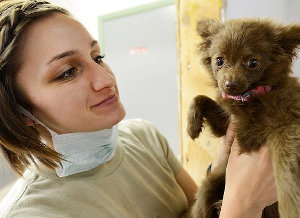Symptoms of Mushroom Toxicity in Dogs

Mushroom toxicity in dogs results from consuming poisonous mushrooms. The following are some of the common symptoms to watch out for;
It’s important to note that the severity of mushroom poisoning in dogs depends on two factors- the mushroom species the dog has eaten and the quantity consumed. According to Dr. Corinne Wigfall, DVM., BVM., BVS. “If a dog eats wild mushrooms on a walk or even in the backyard, this should be treated as an emergency, and vet help should be sought straight away. Mushrooms can cause kidney and liver failure, neurological signs, and even death, depending on the type and amount of mushroom ingested. Sometimes mushroom ingestion can go unnoticed, and the first signs you may see are vomiting, diarrhea, ataxia (wobbliness) or tremors.” In case of mild stomach upset, your dog may be able to recover at home. Extreme sickness will require hospitalization. Mushroom poisoning can be very serious and life-threatening. Dogs that have eaten a poisonous mushroom need to be seen by a Veterinarian for treatment.
What does mushroom toxicity look like?
Just as there are many types of mushrooms, there are many types of toxic reactions to mushrooms. Signs vary with the mushroom species and amount of mushroom ingested by the pet. To simplify the complexity of mushroom poisoning, the toxins can be broken down into four categories.
Evidence of exposure to mushrooms is the first factor in an accurate diagnosis. Tell your veterinarian if you even suspect that your pet ate mushrooms and when it may have occurred. Be specific when describing symptoms and their time of onset. This information is vital for accurate diagnosis and prompt treatment.
After taking a thorough history, your veterinarian will perform a complete physical exam. Next, blood and urine samples will be taken to determine organ function. A sample of stomach contents may also be retrieved to help identify the mushroom ingested. Since some mushroom toxins have a delayed effect on organs, liver and kidney function tests may be repeated every 24-48 hours to monitor function.
To help with identification, bring a mushroom specimen with you to the emergency hospital. Wrap the mushroom in a damp paper towel rather than a plastic bag. This will preserve the integrity of the specimen and make identification easier. You can also take a picture of the mushroom, but make sure to capture all aspects including the gills, cap, and stem.
What do toxic mushrooms look like?
Some mushrooms look like the umbrella kind with woodland creatures hiding under them depicted in children’s books. Others look entirely different. There are many different species of mushrooms with a variety of characteristics making identification of individual types quite complicated. If you aren’t a “mushroom expert”, it’s best to assume that any mushroom you find could be a poisonous one. It’s not necessary to know the name of every single mushroom species if you avoid them all.
The severity of mushroom induced illness depends on the type and number of mushrooms ingested. Sometimes a pet may have mild gastrointestinal (GI) upset that resolves at home. Other times, pets become extremely sick and require hospitalization. Unfortunately, some pets die despite therapy.